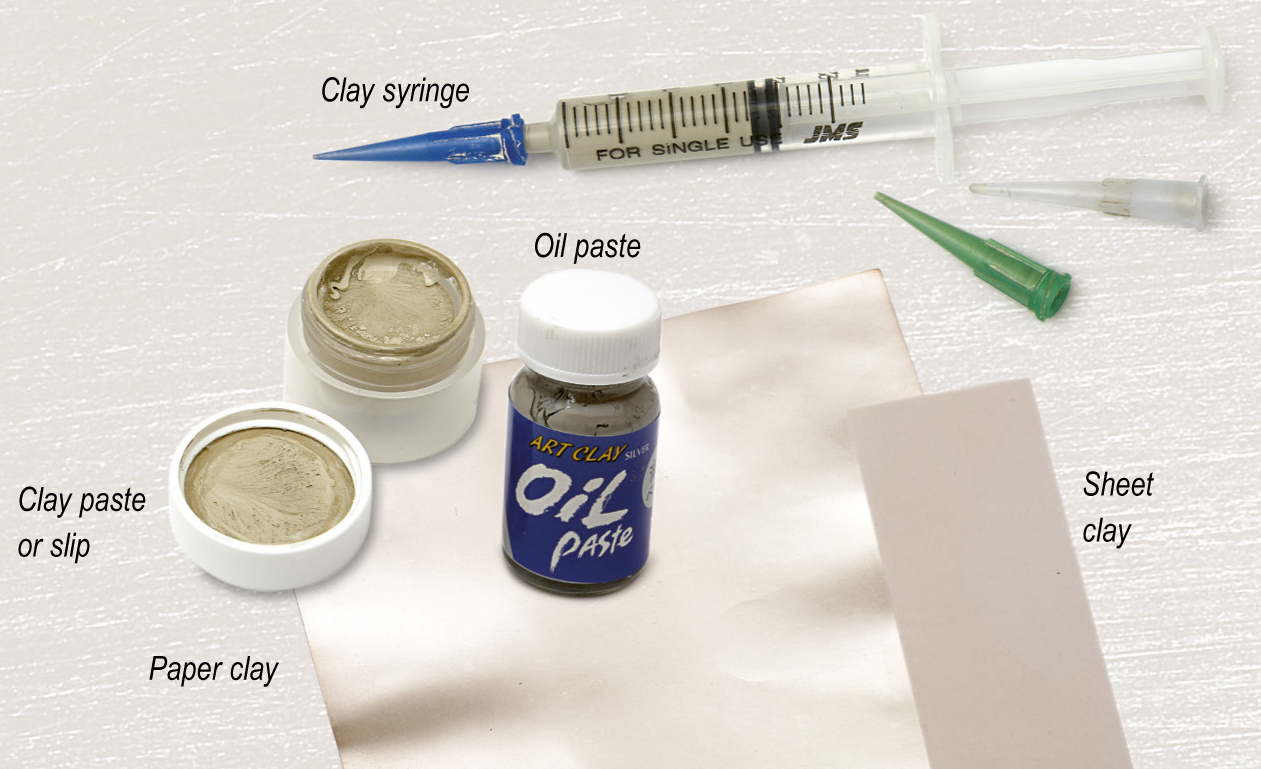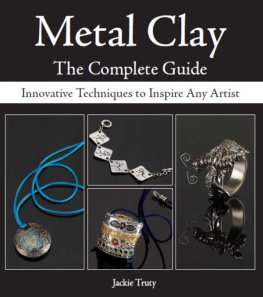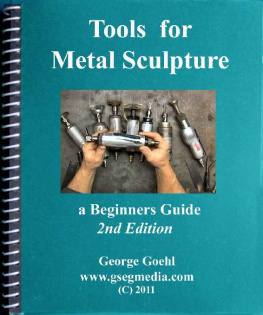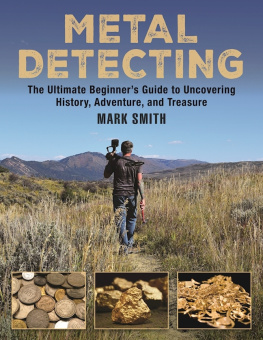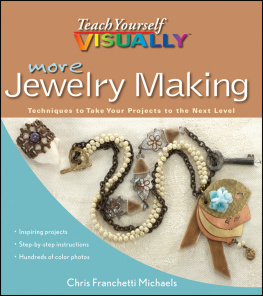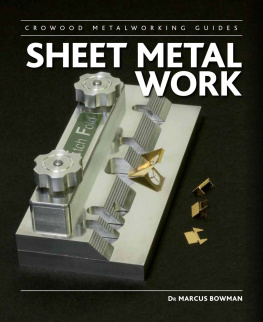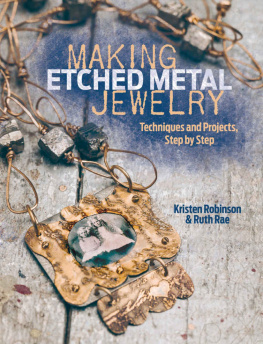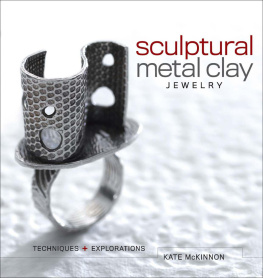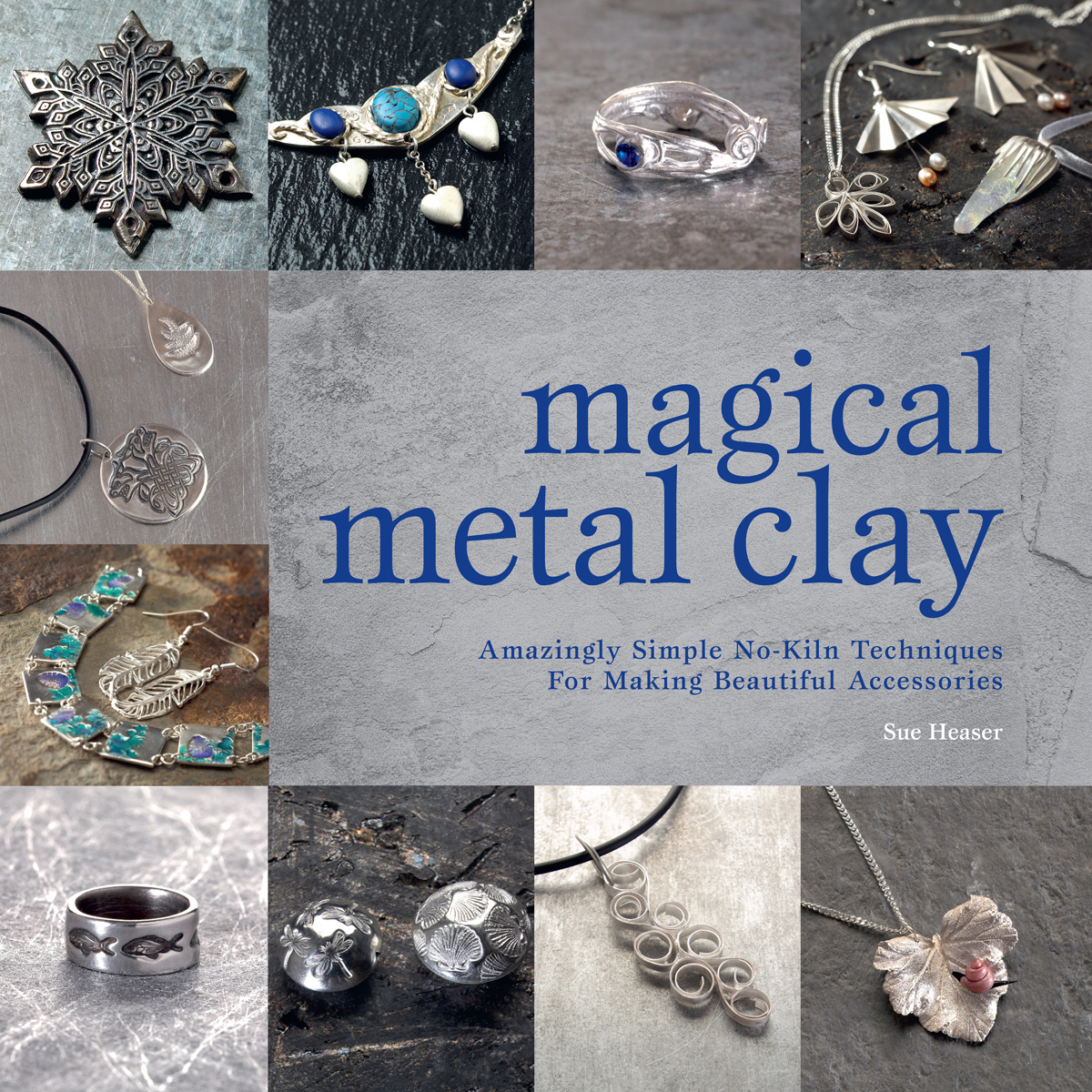Contents
Guide
Pagebreaks of the print version
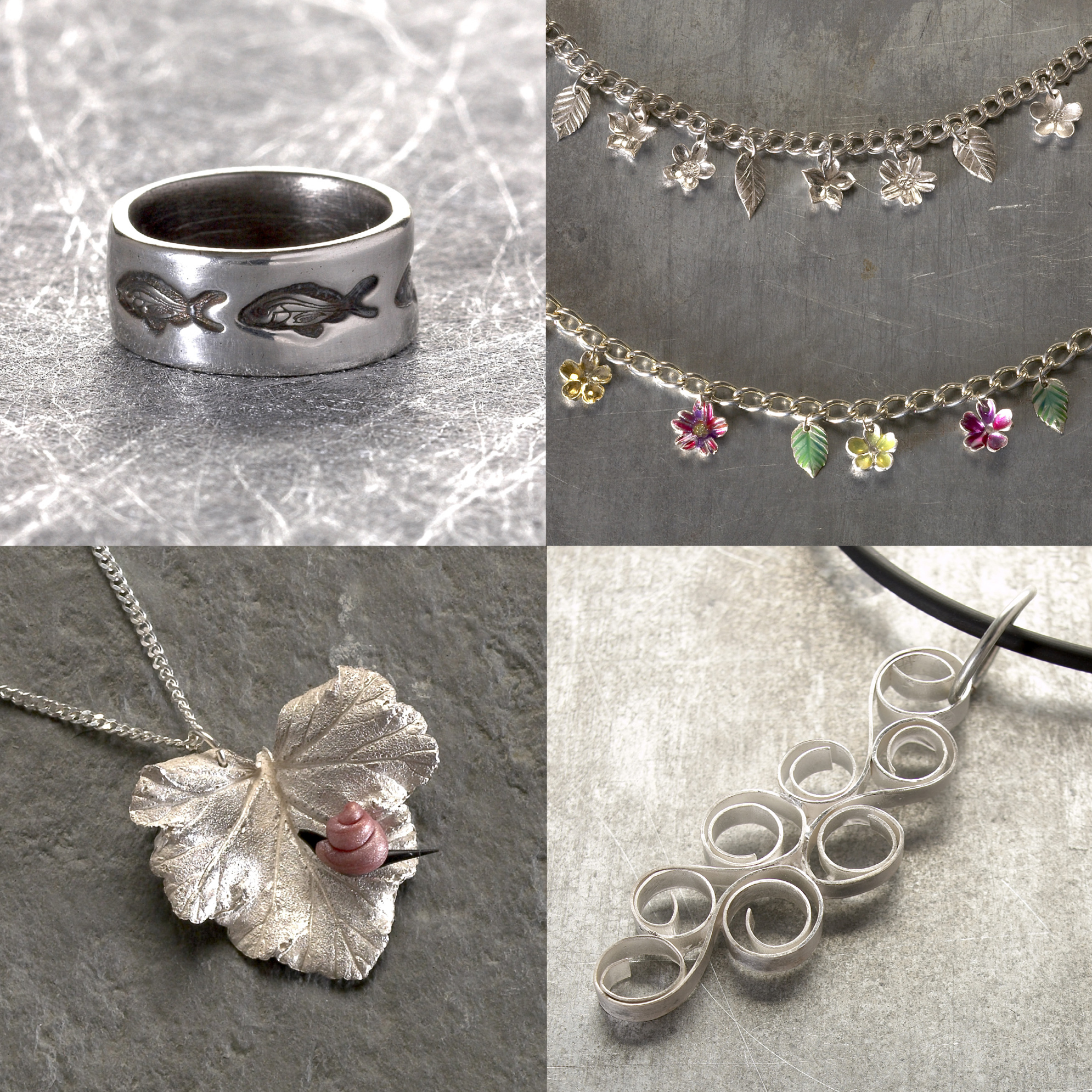
magical
metal clay
Amazingly Simple No-Kiln Techniques For Making Beautiful Accessories

Sue Heaser

www.davidandcharles.com
Contents
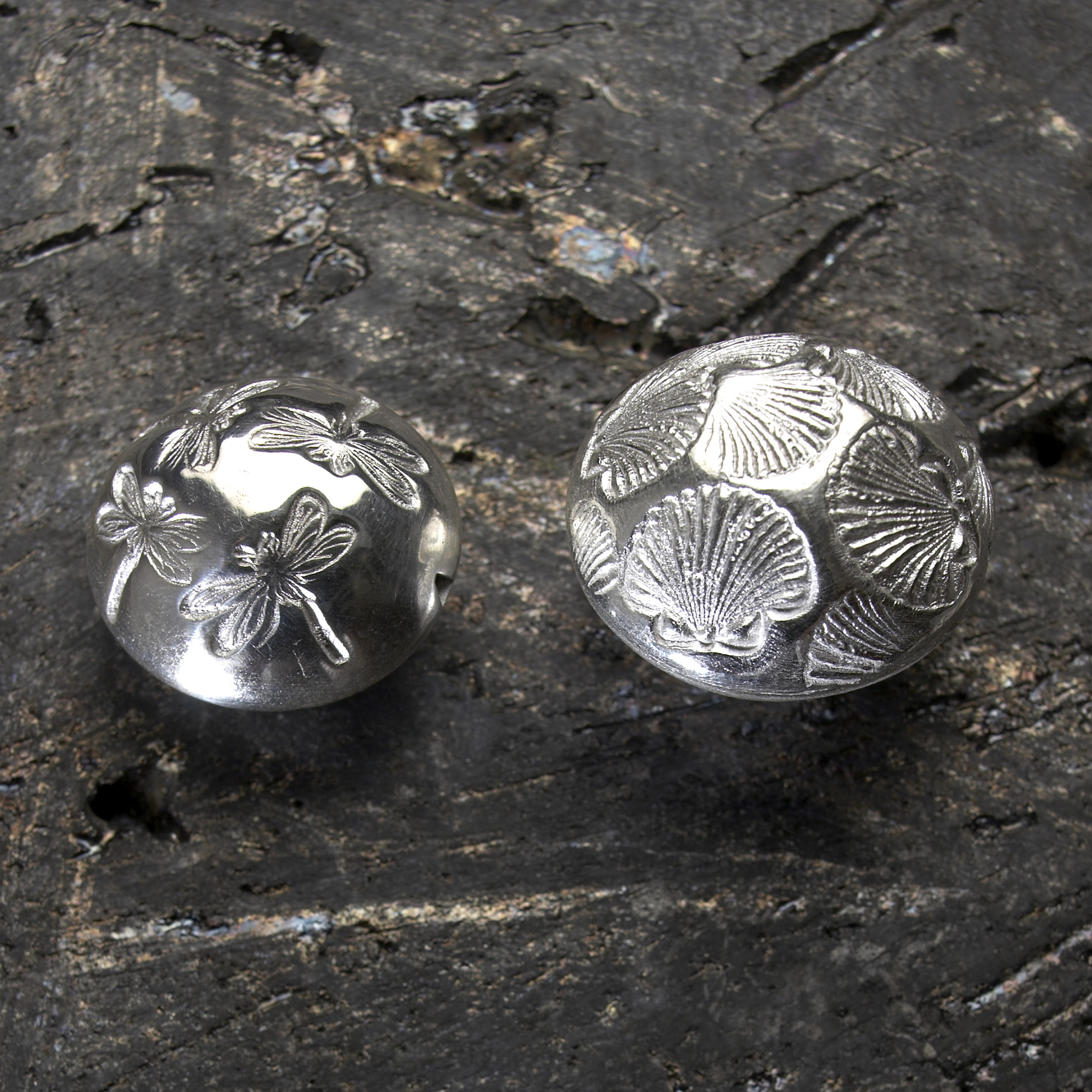
Introduction
Metal clay is a relatively recent invention in the world of arts and crafts. Its description often produces disbelief from the listenerpeople find it astonishing that firing a little gray piece of clay with a blowtorch will turn it into pure silver or gold. But yes, it is true, even though it appears to be a modern form of alchemy.
Metal clay is made from powdered precious metal combined with an organic binder and water. It can be modeled, molded, or sculpted in a way similar to ceramic clay or polymer clay. When heated to a high temperature, the binder burns away, and the precious metal particles sinter (or fuse) into solid silver or gold.
The history of metal clay as an arts and crafts material is surprisingly short. It was invented in Japan in the early 1990s, and since then has taken the jewelry and craft worlds by storm. It is available all over the world, and a rapidly growing body of artists is embracing its extraordinary capabilities.
Two main brands are available: Precious Metal Clay (PMC) made by Mitsubishi Materials Corporation, and Art Clay manufactured by Aida Chemical Industries Co. Ltd. Each company produces a variety of different kinds of metal clay. New and improved versions have appeared regularly over the past ten years. While each brand has a different patent, the techniques used for them are virtually identical.
In the past few years, both manufacturers have introduced types of silver metal clay that can be fired at a lower temperature than the earlier versions, using a small blowtorch or a gas stove in the kitchen. This exciting development has made the clays accessible to the home hobbyist or casual userthere is no need for expensive tools or a kiln.
This book is aimed at just such a user, and all the projects in the main part of the book can be fired using silver metal clay and these simple methods. Kiln owners are not forgotten, however, with a final chapter that includes projects using delicious dichroic glass as well as the fragile and beautiful paper or sheet clay.
If you are a beginner, you are about to discover the fabulous qualities of this magical substance that turns into pure silver before your eyes. If you are more experienced in metal clays, then I hope you will find many new discoveries in this book.
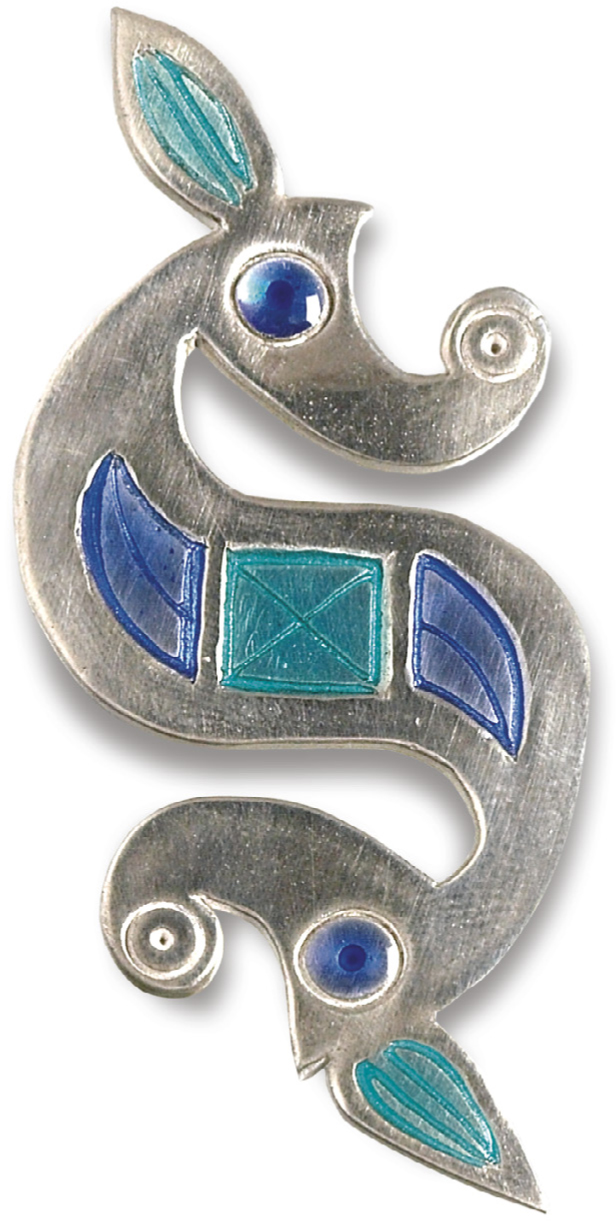
Materials
The new generation of low-fire metal clays are easy for the home crafter to use, and the projects in the book are all made with these. The main types are listed here. There are also many other exciting materials that you can use to embellish and enhance your metal clay jewelry.
METAL CLAY
SILVER CLAYLUMP FORM
The standard type of metal clay comes in the form of a lump, just like ceramic clay or polymer clay. This is the type of clay required whenever a project simply lists silver metal clay. Projects that require more time to work specify slow-dry silver metal clay, because it gives about four times the working time before it begins to dry out. It is also an ideal choice for beginners. If slow-dry clay is not specified, then any of the four types of lump clay listed below can be used. All of the clays come in various package sizes, from 5g through to 100g. If you are a beginner, stick to projects that use 10g of clay or less. See for advice on storing metal clay.
ART CLAY 650
Low-fire clay
Shrinkage: 810%
Firing: Gas burner, blowtorch, or kiln
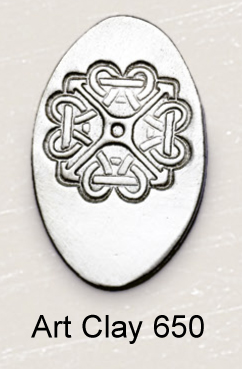
PMC+
Medium- to low-fire clay
Shrinkage: 1015%
Firing: Blowtorch or kilnnot recommended for gas burner
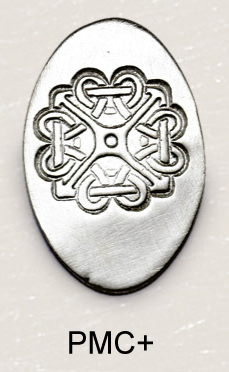
ART CLAY 650 SLOW DRY
Low-fire clay
Shrinkage: 810%
Firing: Gas burner, blowtorch, or kiln
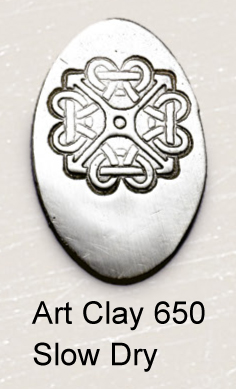
PMC3
Low-fire clay
Shrinkage: 1015%
Firing: Gas burner, blowtorch, or kiln
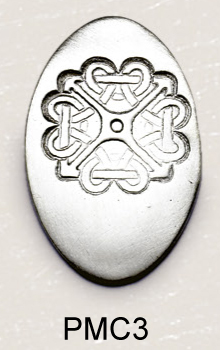
GOLD METAL CLAY
Gold metal clay is available in both Art Clay and PMC, but can only be fired in a kiln and is very expensive. It is only available in lump form or as an embellishing paste. The modeling techniques are the same as those described for silver clay, but you will need to refer to the manufacturers instructions for specific firing guidelines.
SILVER CLAY PASTE OR SLIP
This paste or slip form of metal clay has many uses, from attaching findings to painting fine layers of silver. You can make your own by adding water to the lump form of the clay, or purchase the ready-made variety. These clays have similar properties to their lump clay counterparts.
Art Clay 650 Paste Type
PMC+ or PMC3 Slip
SILVER CLAY SYRINGE
Metal clay paste is also available in a ready-filled syringe. You can use different-sized nozzles (or cut down a fine one) for piping lines of filigree.
Art Clay 650 Syringe Type
PMC+ or PMC3 Syringe Type
SILVER PAPER OR SHEET CLAY
This type of clay uses papercraft techniques, including cutting, folding, and quilling. The Art Clay brand feels like thick paper and holds its shape well when folded or creased. The PMC brand is thinner and feels more like fine leather. Both types are kiln-fire only.
Art Clay Paper Type
PMC+ Sheet
ART CLAY SILVER OIL PASTE
This is a wonderful product if you have a kiln (it is kiln-fire only). Use it to attach findings to fired silver, and to mend silver pieces that have broken.
